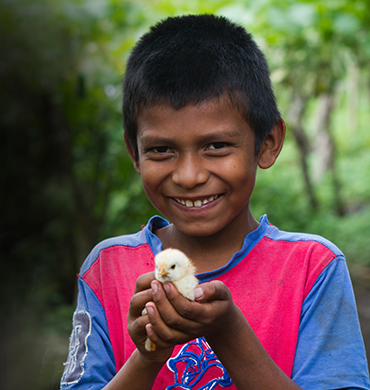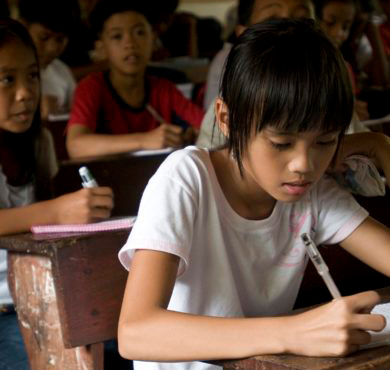The Parable of the Family of Four

A certain family of five lived in the land of the rising sun, where there was a big flood. One member of the family died, leaving the family with just four. The surviving members were grieved and troubled, but found strength in each other.
After the flood receded, they stayed in their shelter and were scared to leave — they looked out the window and saw much damage. But then, they heard their names being called. The family left the shelter and moved towards the voice.
As they walked, the family of four saw an elderly woman under a tree. She seemed hungry and disheveled. The family members were moved with compassion. Together, they carried the woman to a place of comfort where she got food, water and shelter. They then continued their journey.
By chance, a young boy came along. He was crying, as he was lonely. The younger members of the family sang songs and provided the boy consolation as the older ones guided him to an area with other children. Then, still hearing the voice calling, the family moved on.
They passed a gentle farmer sitting by a field, who expressed grief that the field was destroyed by the flood. All of the family members helped the farmer to clear the field and plant seeds. The farmer was happy and hopeful about the future.
The family of four continued along the road, and after a while, they looked back and saw that the young boy, the quiet farmer and the older woman were at peace. They were encouraged.
Looking ahead again, the family could see some hills and what looked like a bigger mountain in the distance. They could not see where the road ended, but held each other’s hands and continued walking towards the voice. The Sun was still rising.
———-
I am currently in Japan meeting with representatives of the Diocese of Tohoku, part of the Nippon Sei Ko Kai (the Anglican Communion in Japan). The diocese has under its purview six prefectures, including Miyagi, Iwate and Fukushima – among the areas most stricken by the March 2011 earthquake and tsunami. The population of these three prefectures totals 5.7 million people.
Prior to the disaster, the diocese had just over 400 worshippers on an average Sunday. Given its small size, it would be easy for the church to feel overwhelmed and to stay reserved and detached from the needs around it. But not this church!
Despite the numerous challenges, the diocese has identified its role in serving the many marginalized populations of the area. Like the family of four in the parable, the church is serving the elderly woman, the orphaned boy, the humble farmer, the disabled mother, the immigrant worker — vulnerable groups who are already in need and that often fall through the gaps during disaster relief efforts. The diocese recognizes it is a small organization and is building its role in the society around it with the help of Anglican church partners and friends, both local and abroad.
I have been amazed by the commitment of the diocese to the wider community. Episcopal Relief & Development is committed to accompanying the church in its disaster response program, named “Issho ni Aruko” (“Let us walk together”).
———-
Nagulan Nesiah is an International Program Officer with Episcopal Relief & Development.
Photo: “Nagoya, Japan 3/16/2011,” cc by ka_tate


